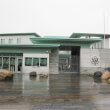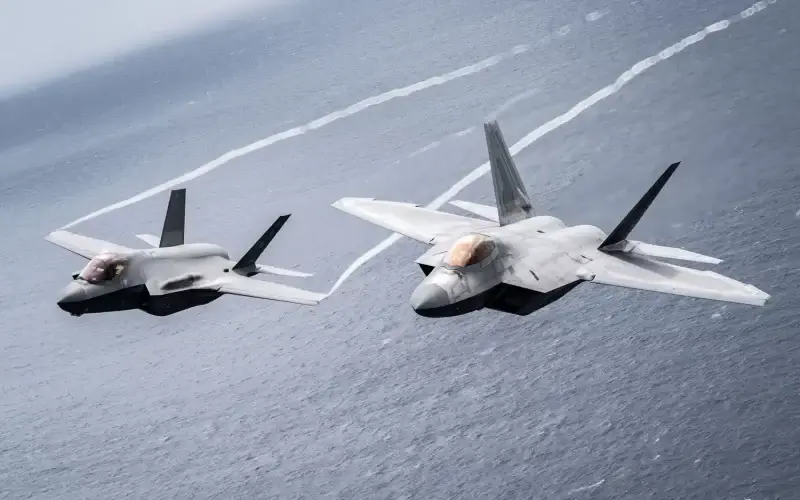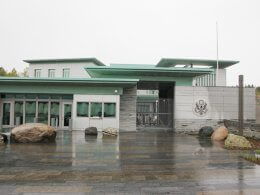Experts familiar with the United States Air Force's capabilities outlined the decline in relative spending for the military branch and the decreasing number and increasing age of the tactical aircraft fleet, along with the lack of modernization and new aircraft in a recent report published by the Mitchell Institute for Aerospace Studies. The research concluded that should a military conflict with China erupt, the Chinese Military's Air Force capabilities and deterrence are capable enough to inflict severe damage on U.S. forces.
The U.S. Air Force (USAF) lacks the ability to "fight a peer conflict, deter elsewhere, and defend the homeland as required by the National Defense Strategy,” according to retired Air Force Lieutenant General David A. Deptula and former Air Force Colonel Mark Gunzinger.
One of the most significant reasons for this is the decline in combat power and morale in the Air Force is apparent in flying hours, overall readiness, force mentality, and esprit de corps. In the last year alone, flying hours across all aircraft in the Air Force averaged 10.1 hours per month, whereas, in the 1990s, Air Force pilots averaged around 29 flights per month.
In the past, pilots in the USAF could cite their experience and training as a competitive advantage over large numbers of technologically advanced aircraft fielded by America's enemies. In 2013 however, pilots could no longer boast of their training, experience, or aircraft advancements. The same year, USAF officials noted that training hours for pilots dropped to the level once occupied by Soviet pilots during the Cold War, with American pilots having fewer hours than Chinese, Indian, or European pilots.
In the years after 2013, the USAF was short 2,000 pilots and has been unable to attract, produce, and hold enough people to fill cockpits. Additionally, the paper points out that the lack of modern equipment for the USAF has been another significant problem for the military branch.
According to Deptula and Gunzinger, past budgets from the American government have divested thousands of aircrafts rather than buying new ones, "providing the Air Force with a smaller, older, and less ready force in the near term."
Today, the Air Force stands at 2,176 aircrafts compared with a fleet operated by China's Air Force and its Naval Air Force of around 1,700 combat aircrafts. While the former Military officials note the lack of combat experience and constricted training approach in the Chinese Air Force, the number of aircraft and pilots is concerning, given that in any future conflict, the Chinese will fight on their "own terms." Should China and America engage in a war, the Chinese military will use its numbers and surface-to-air missiles to bear while American forces will fight with a smaller force 7,000 miles from its own territory.
Regarding budget numbers allocated to the Air Force, Deptula and Gunzinger explain what the American military branch has received. In the latest budget, the Biden administration asked Congress to fund a smaller budget for the Air Force in the Fiscal Year 2023 ($169.5 billion) than it requested for the Navy ($180.5 billion) and the Army ($177.5 billion). However, the authors note that in the Air Force's budget is a $40 billion difference that will "pass through" and go to non-Air Force organizations and programs.
According to the report, the pass-through funds will go toward modernizing America's nuclear forces and not on new aircraft like 400 5th generation F-35A fighters designed to fight in the high-threat operational environments the U.S. would face against China or Russia. The authors note that the Army and Navy have received around $1.3 trillion and $914 billion more, leading USAF budgets to "chronically lag."
Since September 11, the American Army, Navy, and Air Force have received equal funding. Since the global war on terror, Congress has increased funding for the Army by 250 percent, with the Air Force's budget receiving a "modest amount." Both former military officials argue that national priorities must matter as much as military service priorities, noting that the funds from the new Inflation Reduction Act passed by the President and Congress could theoretically buy new equipment and aircraft.
Deptula and Gunzinger stress that the shortfall must be fixed soon and call on Congress to pass a 3- 5 percent annual budget increase on top of adjustments for inflation. The officials hope that more former and current Air Force officials speak out and forcefully challenge the administration and Congress on upgrading and increasing the capabilities of the USAF. With the aerospace industry and senior USAF leaders gathering this week in Washington D.C. for the annual Air Force Association conference, many experts are calling on officials to speak on this issue.
Since President Biden took office, the U.S. military and its branches have faced a significant decline in military equipment and recruitment. Some of the reasons for this have been the aftereffects of the COVID-19 lockdowns, increased obesity rates among young Americans, increased criminal and drug records among young Americans, a lack of patriotism, and growing anti-American sentiments. The President and members of Congress have primarily focused on domestic spending issues rather than military spending, leading many experts to question the President and Congress's priorities.
Americans interested in joining the USAF and other branches of the armed forces have deferred from enlistment, citing the number of ways that the Armed Services have become woke in their policies and standards for soldiers, pilots, and naval personnel.










